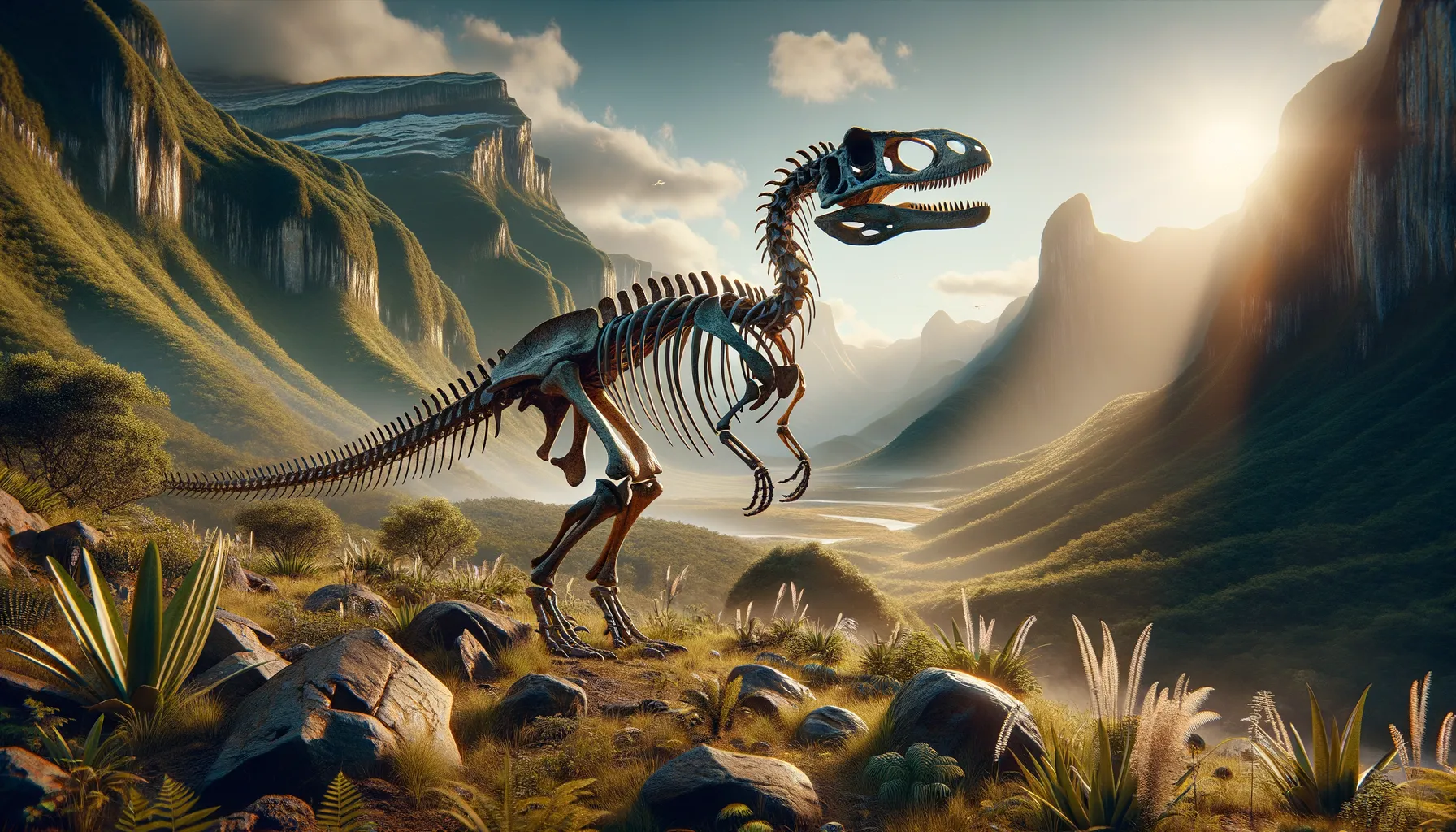
Mirischia
Swift predator of the prehistoric past.
Period
Cretaceous
Length
Roughly 2 meters in length.
Height
Approximately 60 centimeters at the hip.
Weight
Around 20 kilograms.
Mirischia was a small theropod dinosaur that roamed the Cretaceous landscapes of what is now Brazil. Known from a fossil that includes parts of its pelvis and ribcage, its unique skeletal features suggest it was a swift, lightweight predator. This dinosaur provides important insights into the diversity and evolution of early theropods in South America. Though not well-known, it contributes significantly to our understanding of dinosaur ecosystems during the Cretaceous period.
Diet
Mirischia likely had a carnivorous diet, preying on small animals and possibly insects. Its lightweight build would have allowed it to be a quick and agile hunter, capable of catching nimble prey.
Hunting
Mirischia's hunting behavior likely involved swift movements to capture small prey. With its slender frame, it may have relied on surprise and speed, making it an effective hunter in its ecosystem.
Environmental challenges
Mirischia faced various environmental challenges such as fluctuating temperatures and changes in vegetation. These factors affected the availability of prey, requiring adaptability for survival. In addition, competition with other predators may have influenced its hunting strategies and territorial behavior.
Speed
Moderate, likely agile for its size.
Lifespan
Estimated to be 10 to 20 years.
First discovery
First discovered in northeastern Brazil.
Fun Facts
- Mirischia lived during the Early Cretaceous period, about 125 million years ago.
- This dinosaur's name, Mirischia, means 'wonderful pelvis', named after its unique pelvic bones.
- Mirischia was discovered in Brazil and is one of the few dinosaurs known from the region.
- It was a small theropod dinosaur, estimated to be around 2 meters in length.
- Mirischia used to be a meat-eater, with sharp claws and teeth.
- The discovery of Mirischia has helped scientists better understand the diversity of theropods in South America.
- Fossils of Mirischia have provided insights into the evolution of air sacs in dinosaurs, which are features still present in modern birds.
Growth and Development
Mirischia likely experienced rapid growth during its early years, typical of small theropods. This fast development could have helped it reach maturity quickly to evade predators. As it grew, it would have honed its hunting skills, becoming more efficient and able to tackle larger prey.
Habitat
Mirischia inhabited forested and possibly coastal areas of ancient Brazil, where vegetation provided cover and hunting opportunities. Its environment was likely rich in biodiversity, offering a range of small prey items. The habitat would have included rivers and streams, contributing to the lush foliage and supporting a complex ecosystem.
Interaction with other species
This dinosaur would have interacted with various other species, including contemporaneous dinosaurs, small mammals, and reptiles. It likely engaged in competition for resources such as food and space with other small carnivores. Mirischia could have also faced threats from larger predators in its area.
Natural lifespan
Mirischia's natural lifespan was likely around 10 to 20 years.
Reproduction
Mirischia possibly laid eggs, as is typical for theropods, with nests likely concealed among dense foliage for protection. Clutch sizes were probably small, ensuring greater care for each offspring. Parental involvement might have included guarding and actively caring for the young during vulnerable stages.
Social behaviour
Its social behavior might have included living in small groups or solitarily, depending on resource availability. Social interactions may have been limited to mating and nest-building activities. Territorial disputes could arise if territories overlapped, leading to aggressive displays.
Fossil locations
Fossils of Mirischia are primarily found in the Alcântara Formation of Brazil. This site has yielded valuable information, helping scientists understand its lifestyle. The specific fossil remains have provided key insights into the structure and possible behaviors of the species.
